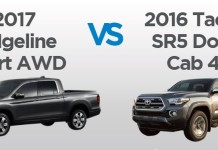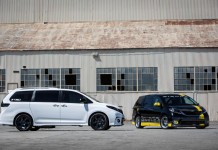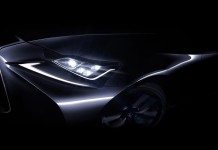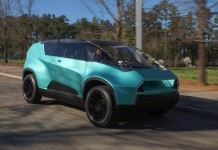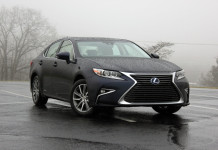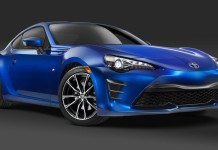Toyota Motor Sales, U.S.A., Inc. is highlighting its Star Safety System™, which combines five safety technologies as standard equipment on all new Toyota models, as part of a new national advertising campaign.
The campaign features Toyota owners and engineers talking about safety and quality via television, print, digital (www.toyota.com/safety), radio and outdoor advertising platforms.
The Star Safety System includes Vehicle Stability Control (VSC), Traction Control (TRAC), Anti-lock Brake System (ABS), Electronic Brake-force Distribution (EBD) and Brake Assist.
“From Yaris to Land Cruiser, Toyota is the first full-line manufacturer to combine these five key accident-avoidance technologies as standard equipment on every model,” said Bob Carter, Toyota Division group vice president and general manager. “Toyota customers tell us they want to know more about the Toyota safety story, and the Star Safety System is just one of the features that reassure them about the safety and quality of our vehicles.”
All five Star Safety System components feature advanced accident-avoidance technologies, including the following:
• Vehicle Stability Control (VSC), which helps prevent wheel slip and loss of traction by reducing engine power and applying brake force to the wheels that need it. Toyota VSC monitors steering angle and the direction a vehicle is traveling, and it senses when the front or rear wheels begin to slip. When VSC senses this loss of traction or slip, the system reduces engine power and applies braking to the individual wheels that need it, in order to help correct the slip and keep the vehicle on its intended path.
• Traction Control (TRAC) helps maintain traction on wet, icy, loose or uneven surfaces by applying brake force to the spinning wheel or wheels. TRAC sensors are activated when one or more wheels start to slip. The system is designed to limit engine output, applies the brakes to the spinning wheel(s), and transfers power to the wheels that still have traction.
• The Anti-lock Brake System (ABS) helps prevent brakes from locking up by “pulsing” brake pressure to each wheel in order to help the driver maintain control in emergency-braking situations. Without ABS, emergency braking can cause brakes to lock up and cause a vehicle to skid. Toyota’s ABS sensors detect which wheels are locking up and prevent the lockup by “pulsing” the brakes at each wheel independently. Pulsing releases brake pressure repeatedly for fractions of a second – a reaction time not possible for humans. This keeps the wheels rotating and helps the driver to avoid going into a skid.
• Electronic Brake-force Distribution (EBD) is incorporated in Toyota’s ABS technology. EBD helps keep a vehicle more stable and balanced when braking. During an abrupt stop, momentum can cause a vehicle to tilt forward, reducing the brake force of the rear tires. EBD responds by redistributing brake force. Wheels with more braking effectiveness receive more brake force and wheels with less effectiveness receive less brake force, helping to prevent brake lockup. EBD is especially helpful when carrying cargo. Sensors recognize the extra load the cargo puts on the rear axle, so brake pressure on the rear wheels is increased because the extra weight improves braking effectiveness.
• Brake Assist is designed to detect sudden or “panic” braking and add the full pressure needed to help prevent a collision. If a driver fails to apply enough pressure to the brake, the Brake Assist sensors will detect this sudden or “panic” braking and add pressure. This additional pressure can help the driver avoid hitting the object.
Another feature commonly known as brake-override technology will be added to all Toyota, Lexus and Scion models by the end of 2010. This braking-system enhancement will automatically reduce engine power when the brake pedal and the accelerator pedal are applied simultaneously under certain driving conditions. Many of the vehicles currently at Toyota dealership already include brake override as standard equipment. The 2011 models already on sale featuring brake override including Camry, Sienna, Avalon and Scion xB, in addition to some 2010 models. Brake-override technology has always been and will continue to be standard on all Toyota and Lexus hybrid vehicles as part of the hybrid system control logic.

